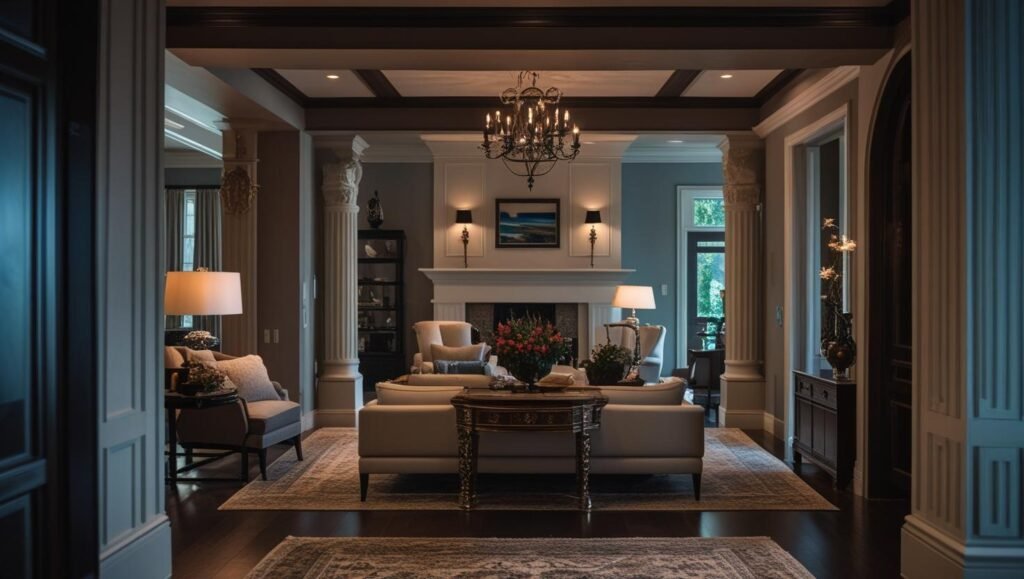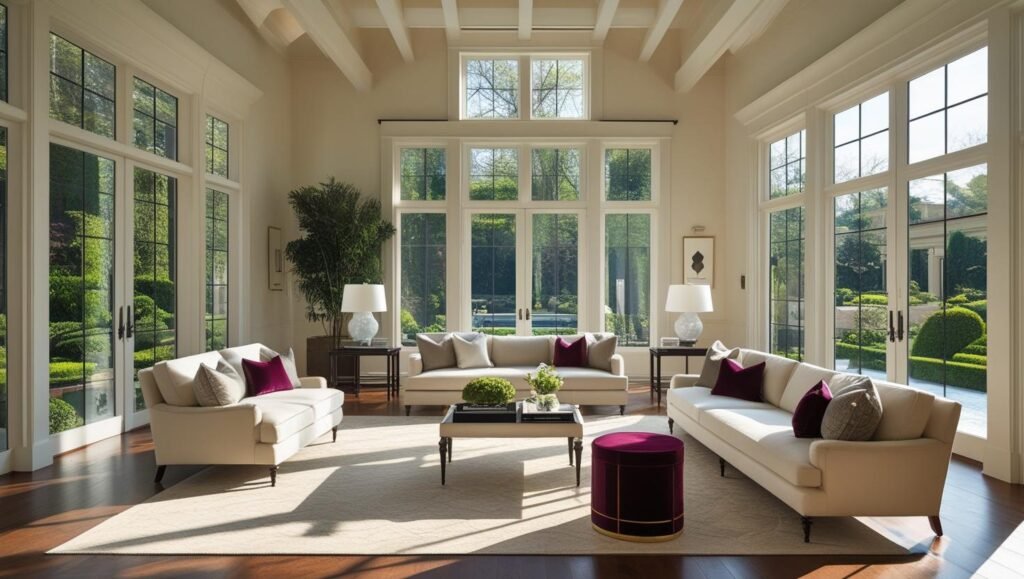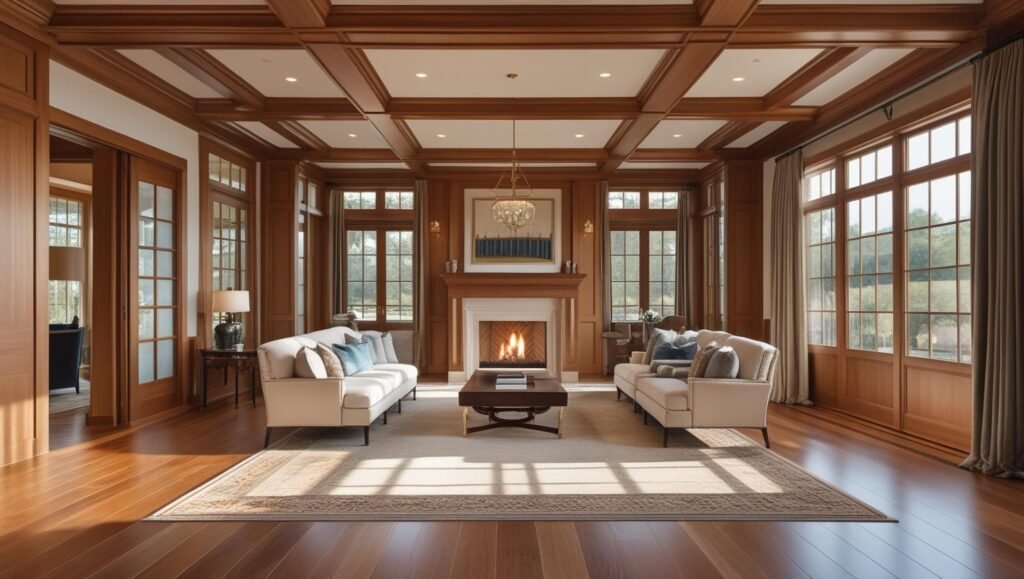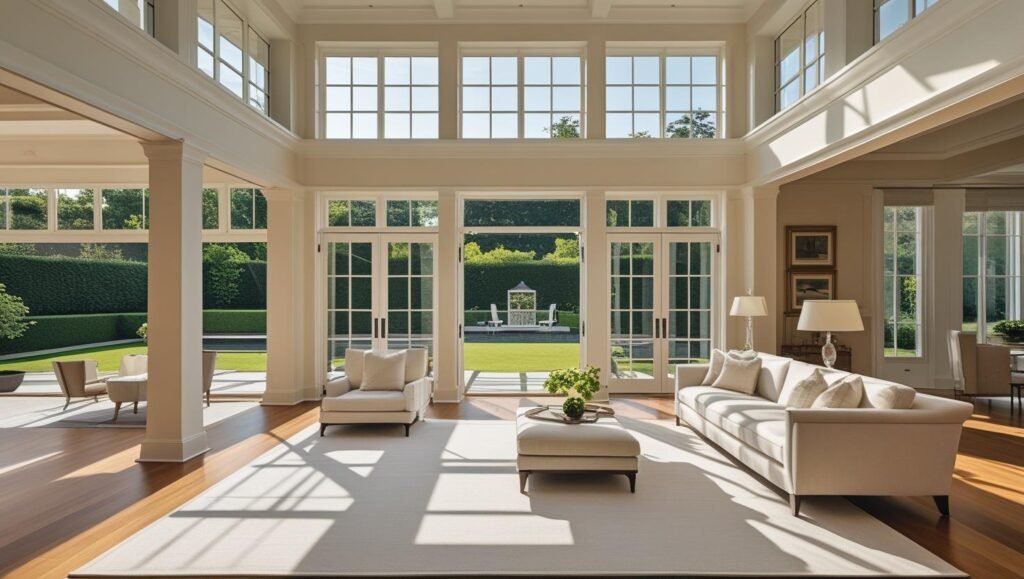Luxury home design is not about the accumulation of expensive items or flashy features. It’s a calculated expression of refinement, comfort, and intentionality. At its highest form, luxury design balances aesthetic precision with livable functionality, allowing spaces to become personal sanctuaries that subtly echo opulence through every detail.

Defining the Essence of Luxury Home Design
What makes a home truly luxurious is not just the price tag but the thoughtfulness behind every architectural choice, material selection, and spatial flow. These residences embody a lifestyle—tailored, curated, and deeply personal. From the layout to the lighting, everything serves a purpose, not just in function but in elevating the human experience.
Architectural Uniqueness
Architects craft luxury homes with distinct identities—featuring grand entryways, sculptural staircases, expansive indoor-outdoor transitions, and double-height ceilings. These elements do more than impress; they establish a seamless living experience defined by space, flow, and sophistication.
Material Integrity and Texture
Material choice defines the tactile and visual language of luxury. Think African teak cabinetry, Calacatta marble surfaces, hand-forged bronze fixtures, and silk wall coverings. These are not mass-produced elements but sourced, custom-crafted, and intentionally applied to reflect wealth and discernment.
Integrated Technology for Seamless Living
Biometric security, AI-driven climate control, and voice-activated smart systems are no longer novelties—they’re essential components of modern luxury home design. These technologies remain invisible, enhancing security, efficiency, and convenience without disrupting the aesthetic flow of a space. Tools like the Meta Tags Checker help ensure luxury property listings stay optimized for high search visibility.
Spaces That Define Modern Luxury
Home Design Chef-Level Kitchens
At the heart of many luxury homes is the kitchen, outfitted with professional-grade appliances, dual prep stations, wine towers, and imported stone surfaces. It’s where gourmet function meets social elegance.
Spa-Inspired Bathrooms
These bathrooms include soaking tubs carved from single stone blocks, heated marble floors, and digital steam showers with aromatherapy. Lighting is ambient, often layered with natural elements to evoke calmness and retreat.
Private Wellness Suites
Luxury homes today often feature wellness spaces including infrared saunas, cryo-chambers, and in-home gyms designed with studio-quality acoustics and climate control. These rooms reflect the increasing value placed on longevity, privacy, and peace of mind.
Entertainment Hubs
Luxury homes feature soundproofed cinemas with Dolby Atmos, private wine lounges, and gaming rooms—designed not just for living, but for hosting, retreating, and indulging. See more examples of celebrity-style entertainment design choices in elite homes.

Trending Concepts in Luxury Home Design
Sustainable Luxury
Eco-consciousness is redefining the luxury market. Homeowners are integrating energy-efficient glass, geothermal systems, reclaimed wood, and LEED-certified builds into their properties. These homes reduce footprint without sacrificing elegance.
Biophilic Home Design
Designers bring natural elements indoors using vertical gardens, living walls, indoor courtyards, and floor-to-ceiling glass that seamlessly merges architecture with the surrounding landscape. The result is a home that breathes with its environment.
Art-Centric Layouts
Homes are increasingly designed as live-in galleries. From custom lighting to climate-controlled hallways, art integration is no longer an afterthought. Designers now collaborate with curators to shape rooms around collections rather than the other way around.

Real Estate Value and ROI
A home with timeless luxury design offers enduring value. These properties consistently outperform the market due to their uniqueness, superior quality, and lasting appeal. Unlike trend-driven real estate, their desirability grows over time.
Home Design International Demand
From Dubai to Beverly Hills, luxury home design speaks a global language. Foreign investors and high-net-worth individuals are drawn to U.S. properties that embody intelligent layouts, eco-technologies, and future-proof design.
Market Differentiation
Homes built with exceptional design command faster sales and higher price points. For real estate professionals, using tools like the Keyword Density Checker ensures property listings are SEO-optimized to reach the right buyers online.
Practical Tips for Homeowners Investing in Luxury Design
- Engage a designer early in the architectural process to align vision with execution.
- Invest in high-quality foundational materials; they hold visual and functional value long-term.
- Prioritize timeless design over fleeting trends—understated elegance lasts longer.
- Allocate budget for integrated technology and future-proofing systems.
- Focus on comfort-enhancing details: acoustics, natural light, indoor air quality, and spatial flow.
Those building or renovating can reference our guide to the artistry of luxury design for deeper insights and real examples of elevated spaces.
Case Study: Coastal Luxury in Palm Beach
A recent property in Palm Beach demonstrates how luxury home design extends beyond interior appointments. The residence features a zero-edge pool with underwater speakers, a 3,000-bottle wine cellar, hurricane-proof glass, and a rooftop heli-pad. The home’s smart infrastructure allows full operation via smartphone—lighting, surveillance, irrigation, and AV systems can be accessed remotely.
Designers commissioned each furniture piece and built them to exact specifications. They sourced materials globally, selecting Indonesian teak, Moroccan zellige tiles, and hand-blown Italian glass for their rarity and craftsmanship. This property, valued at $67 million, sold in less than six weeks—proof that true luxury, when well-executed, attracts buyers fast.

The Future of Luxury Home Design
Looking ahead, expect further convergence between tech and artisan craftsmanship. Artificial intelligence will personalize spaces in real-time—adjusting lighting based on mood or scent preferences based on the hour. Sustainability will no longer be a niche but a non-negotiable. Indoor environments will increasingly mimic natural ecosystems. And materials once considered industrial—concrete, glass, oxidized metals—will continue being transformed into surfaces of aesthetic intrigue.
Social integration also plays a role. As platforms like OnlyFans and other creator-focused ecosystems redefine home workspace, luxury residences will include professional-grade studios, soundproof content rooms, and backdrops tailored for brand-building.
The modern luxury residence will be more than a showpiece—it will be an ecosystem, a wellness center, a command hub, and a reflection of identity built into architecture.
Conclusion
Luxury home design is the ultimate articulation of personal success, taste, and intentional living. More than aesthetics, it’s a comprehensive strategy rooted in comfort, value, and longevity. For those building, buying, or simply dreaming, understanding the principles and innovations shaping luxury real estate is the first step in turning aspiration into architecture.
Explore more insights on high-end living at our Luxury Home Cruisers blog or discover tools like the Plagiarism Checker to protect your custom content and listings.
